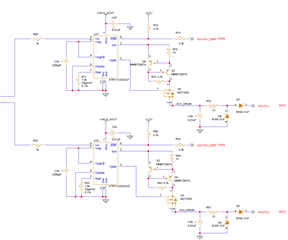HI,
We have a design that uses two XTR111s and the EF pin is high on one and low on the other when Vin=0V, and the output is open circuit for both of them.
Does having a 0V input put the XTR111 in a no man land state for the EF pin?
Here are the voltages I am reading at different pins.
U15:
Vin= 0V
ERR(EF) = .1V
Iout(IS) = 23.0V
Vg = 5.8V
U17:
Vin= 0V
ERR(EF) = 3.3V
Iout(IS) = 21.7V
Vg = 20.9V
Below is the schematic for reference:



